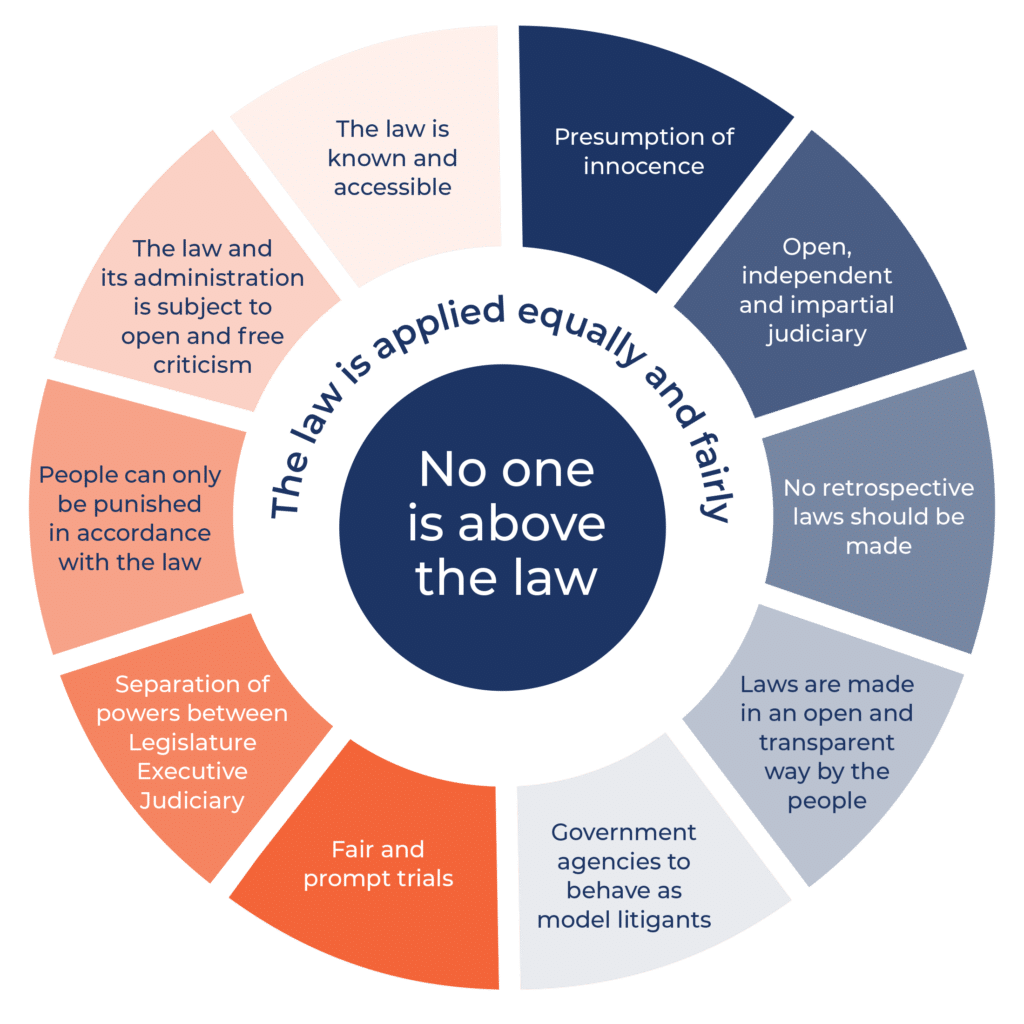In the third post in our series of collaborative posts with New South Wales Young Lawyers’ International Law Committee, Joshua Wood examines the Indian annexation of Goa in 1961.
The annexation of Goa
On 17-18 December 1961, after many years of diplomatic wrangling and civil agitation, India forcibly entered and occupied the Portuguese colonial enclave of Goa and its surrounding areas. By the cessation of hostilities, the 451-year colonial reign of Portugal over the region had ended and Goa was absorbed into the Republic of India.
This article will examine the legal context of India’s annexation and the consequences it had for the international rule of law.
“Legal” declarations of war
Since the end of WWII, the recognised framework for determining the legality of war between countries has been the Charter of the United Nations, and, by extension, the rulings of the UN itself.
One of the Charter’s most important rules is Article 2(4), which makes “the threat or use of force against the territorial integrity or political independence of any state, or in any manner inconsistent with the Purposes of the United Nations” by a country illegal.
The Charter only allows two exceptions to this blanket ban:
- Using force in self-defence to an “armed attack” (until the Security Council has dealt with the conflict in question), in Article 51; or
- Using force that has been approved by the Security Council, in Article 42.
The ‘Security Council’ referred to was set up by the Charter and, uniquely amongst the UN’s institutions, is given the authority to make legally binding decisions for all UN members. By contrast, for example, the General Assembly can give only “recommendations” and the International Court of Justice can bindingly arbitrate only between members that have consented to its jurisdiction (otherwise it only gives advisory opinions).
India and Goa
In order for its use of force in Goa to be considered legal under the Charter, then, India had to argue one of three things:
- Its use of force was not “against” any other state, because Goa was really part of India;
- Its use of force had the approval of the Security Council; or
- Its use of force was in self-defence to a Portuguese “armed attack”.
India, by and large, pursued the first line of argument. Its delegate in the Security Council debates argued, without citing specific laws, that it was the colonisation by Portugal of Goa that was illegal and thus Goa was “not Portuguese by any manner of means”. As a legal consequence, its Defence Minister argued, “India had not violated any one’s [territorial] integrity”.1
However, at the time Goa was recognised by the international community as a part of the Portuguese colonial empire. Just a year earlier the General Assembly had declared Goa a “Non-Self-Governing Territory” under Portuguese administration, which gave Portugal extra responsibilities under the Charter. That same year the ICJ acknowledged Portugal’s sovereignty over Dadra and Nagar Haveli, two Portuguese possessions in India with the same colonial history as Goa. Therefore India’s first possible (and main) argument was out.
Next, and unfortunately for legal clarity, disagreement at the time prevented the Security Council from reaching a decision on the Goa conflict (and the ICJ was not asked to arbitrate or provide an advisory opinion). So the second argument was not available.
Finally, India appeared not to argue self-defence to a Portuguese “armed attack”. The closest it came in the debates was to remind the Security Council of instances of Portuguese “provocation” and “aggression” over the years of colonial subjugation and India’s unsuccessful diplomatic demands for Goa’s return.
By all conventional interpretations, therefore, India’s annexation of Goa breached Article 2 of the Charter.
So how else did India legally justify its annexation?
India argued that Portugal had failed its administrative responsibilities to Goa required under General Assembly Resolution 1514, which was passed in 1960 and, although a “recommendation”, arguably became binding “international custom” by 90% of the then UN members voting for it. This Resolution required that “immediate steps” be taken “to transfer all powers” to the people of Non-Self-Governing Territories (like Goa).
However, nothing in Resolution 1514 suggested that a failure to comply meant the administrating power could have a Non-Self-Governing Territory unilaterally seized and absorbed by another country.2 Indeed General Assembly Resolution 1541, which was also passed in 1960 by three-quarters vote, said that the integration of a Non-Self-Governing Territory with an existing State “should” come about from the territory freely expressing its wishes democratically. Portugal had refused to hold a referendum in Goa but, again, the Resolution did not provide any punishment for this transgression.
Apparently sensing that conventional international law was stacked against his country, the Indian delegate to the Security Council remarked:
If any narrow-minded, legalistic considerations – considerations arising from international law as written by European law writers – should arise, those writers were, after all, brought up in the atmosphere of colonialism…[the tenet that] colonial Powers have sovereign rights over territories they won by conquest in Asia and Africa is no longer acceptable. It is the European concept and it must die.
Response of the international community
What is remarkable about the Goa incident is that the international community, without changing a letter of this law, chose to bend these rules in India’s favour.3 Not only was Goa gradually recognised by the community as a legal part of India,4 but, within 18 months of Goa’s annexation, the Security Council was imposing sanctions on Portugal for continued colonial repression elsewhere.5
Nor was the law changed retrospectively to exonerate India; in 1967 the Security Council noted the “inadmissibility of the acquisition of territory by war”, making no apparent distinction between lawful war, unlawful war, and/or war in the pursuit of decolonisation.6 Ironically this resolution was passed with the help of India, which from 1966 to 1990 was respected enough to be elected to the Security Council on five separate occasions. Eventually this bending of the rules culminated in 1974 in Portugal itself recognising Goa as a part of India.
But what is even more confusing for rule-of-law proponents is that this rule-bending did not set a legal precedent. The General Assembly repeatedly endorsed the right of subjugated peoples to achieve decolonisation “by all available means”,7 yet no exception has been made again for the forcible annexation of a Non-Self-Governing Territory by its former owner.8
In 1982, for example, the Security Council rejected Argentina’s attempted annexation of the UK’s Falkland Islands, despite the Goa precedent being discussed and several members accepting Argentina’s argument that the territory belonged to it.9 Similarly in 1975, the Security Council, whilst noting Portugal’s failure (again) to uphold its administrative responsibilities, unanimously denounced Indonesia’s annexation of East Timor.10
Legitimacy over legality
How can we reconcile this with our understanding of the rule of law? India seemed to violate its legal obligations, and yet it suffered no sanction.
The Indian delegate’s quote above about international law picks up on one of most fundamental tensions of the rule of law: the stability that it brings simultaneously prevents and exacerbates inequality. On the one hand the rule of law protects the most vulnerable from predation and double-standards, but on the other hand stability entrenches the status quo and pre-existing inequality.
The current system suffers from the same problem. Despite providing legal protection for all nations (including those without powerful armies), the UN Charter also legalised and entrenched the territorial dominance of the stronger nations of its day, not least the colonial powers of western Europe. By arbitrarily deeming 26 October 1945 as the breaking point from the conquest of the past (and previous unsuccessful efforts to govern it), the UN Charter effectively denied conquered nations the opportunity to forcibly reclaim territory that had itself previously been taken away by force.
Although we cannot know what was in the minds of the international community in 1961, it appears that Goa was an ad hoc effort to alleviate this paradox on the basis of morality and legitimacy, rather than strict legality.
In truth, the world has changed drastically in the past 55 years since the ad hoc interpretation of Goa. Perhaps the next time it is faced with the choice of either bending the law or lastingly reforming it with clarity, we’ll find the United Nations has too.
Joshua Wood
NSWYL International Law Committee
Notes:
- Quoted in Wright, Q 1962, “The Goa Incident’ AJIL 56 (1962) 617, 622; cited in Korman, S 1996 The Right of Conquest: The Acquisition of Territory by Force in International Law and Practice, Clarendon Press Oxford, p.268 ↩
- Quoted in Wright, Q 1962, “The Goa Incident’ AJIL 56 (1962) 617, 625-6; cited in Korman, S 1996 The Right of Conquest: The Acquisition of Territory by Force in International Law and Practice, Clarendon Press Oxford, p.271 ↩
- Gray, C 2008, International Law and the Use of Force, Oxford University Press, New York, 3rd edition, p.65 ↩
- Korman, S 1996, The Right of Conquest: The Acquisition of Territory by Force in International Law and Practice, Clarendon Press Oxford, p.273 ↩
- Milano E 2006, Unlawful Territorial Situations in International Law: Reconciling Effectiveness, Legality And Legitimacy, Martinus Nijhoff Publishers, Leiden, p.120 ↩
- Milano E 2006, Unlawful Territorial Situations in International Law: Reconciling Effectiveness, Legality And Legitimacy, Martinus Nijhoff Publishers, Leiden, p.108 ↩
- Gray, C 2008, International Law and the Use of Force, Oxford University Press, New York, 3rd edition, p.62 ↩
- Gray, C 2008, International Law and the Use of Force, Oxford University Press, New York, 3rd edition, p.65 ↩
- Korman, S 1996, The Right of Conquest: The Acquisition of Territory by Force in International Law and Practice, Clarendon Press Oxford, p.279 ↩
- Milano E 2006, Unlawful Territorial Situations in International Law: Reconciling Effectiveness, Legality And Legitimacy, Martinus Nijhoff Publishers, Leiden, p.194 ↩


